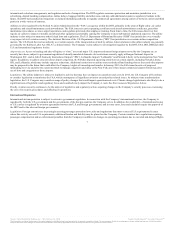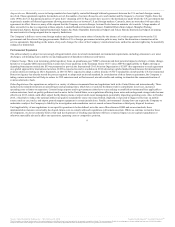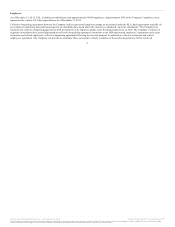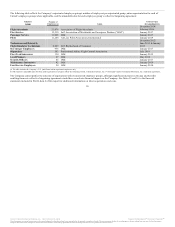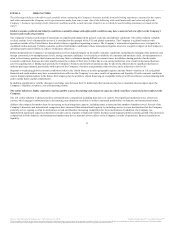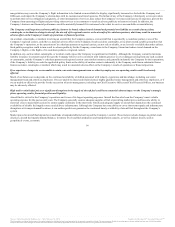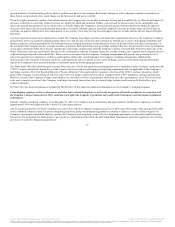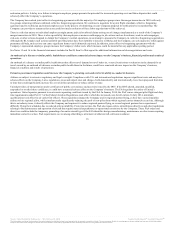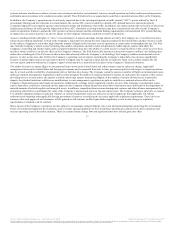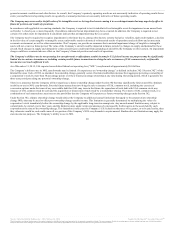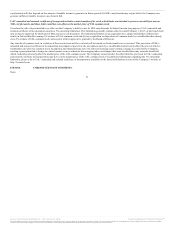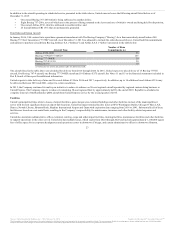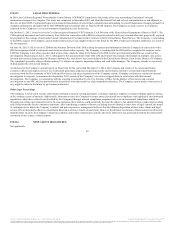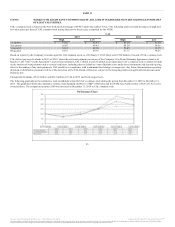United Airlines 2015 Annual Report Download - page 18
Download and view the complete annual report
Please find page 18 of the 2015 United Airlines annual report below. You can navigate through the pages in the report by either clicking on the pages listed below, or by using the keyword search tool below to find specific information within the annual report.
systems, airborne windshear avoidance systems, noise abatement and other environmental concerns, aircraft operation and safety and increased inspections
and maintenance procedures to be conducted on older aircraft. These FAA directives or requirements could have a material adverse effect on the Company.
In addition, the Company’s operations may be adversely impacted due to the existing antiquated air traffic control (“ATC”) system utilized by the U.S.
government. During peak travel periods in certain markets, the current ATC system’s inability to handle ATC demand has led to short-term capacity
constraints imposed by government agencies and resulted in delays and disruptions of air traffic. In addition, the current system will not be able to effectively
handle projected future air traffic growth. Imposition of these ATC constraints on a long-term basis may have a material adverse effect on the Company’s
results of operations. Failure to update the ATC system in a timely manner, and the substantial funding requirements of a modernized ATC system that may
be imposed on air carriers may have an adverse impact on the Company’s financial condition or results of operations.
Access to landing and take-off rights, or “slots,” at several major U.S. airports and many foreign airports served by the Company are, or recently have been,
subject to government regulation. Certain of the Company’s major hubs are among the most congested airports in the United States and have been or could
be the subject of regulatory action that might limit the number of flights and/or increase costs of operations at certain times or throughout the day. The FAA
may limit the Company’s airport access by limiting the number of departure and arrival slots at high density traffic airports, which could affect the
Company’s ownership and transfer rights, and local airport authorities may have the ability to control access to certain facilities or the cost of access to their
facilities, which could have an adverse effect on the Company’s business. The FAA historically has taken actions with respect to airlines’ slot holdings that
airlines have challenged; if the FAA were to take actions that adversely affect the Company’s slot holdings, the Company could incur substantial costs to
preserve its slots or may lose slots. Further, the Company’s operating costs at airports, including the Company’s major hubs, may increase significantly
because of capital improvements at such airports that the Company may be required to fund, directly or indirectly. Such costs could be imposed by the
relevant airport authority without the Company’s approval and may have a material adverse effect on the Company’s financial condition.
The ability of carriers to operate flights on international routes between the United States and other countries may be subject to change. Applicable
arrangements between the United States and foreign governments may be amended from time to time, government policies with respect to airport operations
may be revised, and the availability of appropriate slots or facilities may change. The Company currently operates a number of flights on international routes
under government arrangements, regulations or policies that designate the number of carriers permitted to operate on such routes, the capacity of the carriers
providing services on such routes, the airports at which carriers may operate international flights, or the number of carriers allowed access to particular
airports. Any further limitations, additions or modifications to such arrangements, regulations or policies could have a material adverse effect on the
Company’s financial position and results of operations. Additionally, a change in law, regulation or policy for any of the Company’s international routes,
such as open skies, could have a material adverse impact on the Company’s financial position and results of operations and could result in the impairment of
material amounts of related tangible and intangible assets. In addition, competition from revenue-sharing joint ventures and other alliance arrangements by
and among other airlines could impair the value of the Company’s business and assets on the open skies routes. The Company’s plans to enter into or expand
U.S. antitrust immunized alliances and joint ventures on various international routes are subject to receipt of approvals from applicable U.S. federal
authorities and obtaining other applicable foreign government clearances or satisfying the necessary applicable regulatory requirements. There can be no
assurance that such approvals and clearances will be granted or will continue in effect upon further regulatory review or that changes in regulatory
requirements or standards can be satisfied.
Many aspects of the Company’s operations are also subject to increasingly stringent federal, state, local and international laws protecting the environment.
Future environmental regulatory developments, such as climate change regulations in the United States and abroad could adversely affect operations and
increase operating costs in the airline industry. There are certain climate change laws and regulations that have already gone into effect
17
Source: United Continental Holdings, Inc., 10-K, February 18, 2016 Powered by Morningstar® Document Research℠
The information contained herein may not be copied, adapted or distributed and is not warranted to be accurate, complete or timely. The user assumes all risks for any damages or losses arising from any use of this information,
except to the extent such damages or losses cannot be limited or excluded by applicable law. Past financial performance is no guarantee of future results.


